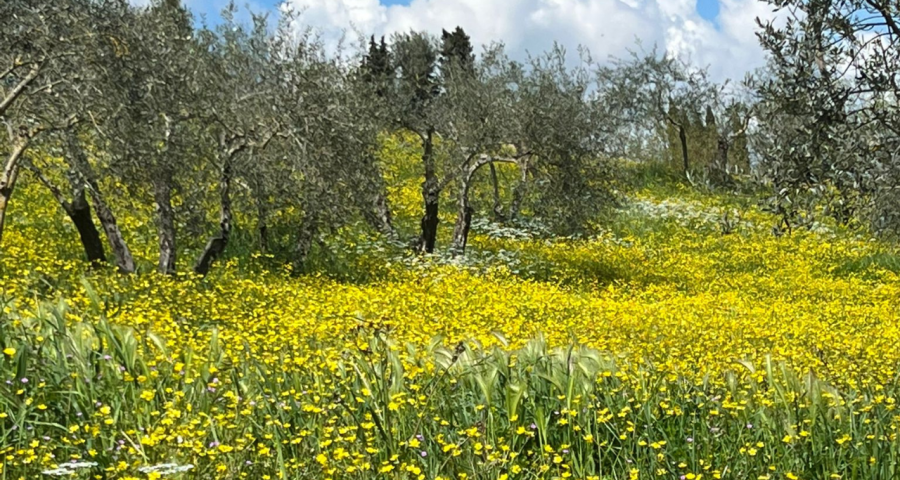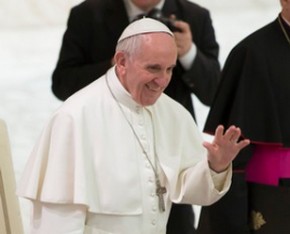CounterEconomy/9 - The analysis of the civil and economic effects of the Counter-Reformation continues.
By Luigino Bruni
Published in Avvenire 30/04/2023
"There has often been cases of true piety with false theology. As Galileo observed, one does not learn how to play the organ from those who know how to make them, but from those who know how to play them. Theologians make organs, but playing them something else altogether. Even the most unlearned of Christians could manage it better."
Giuseppe De Luca, Introduction to the Italian archive for the history of piety (Introduzione all’archivio italiano per la storia della pietà), p. LIX
The Christianization of the feasts of nature, the affirmation of holy intercessors and of a harsh theology, and the simple strength of fidelity to God, the God of life.
«What about those in each region claiming their particular patron saint? One makes toothache go away, another one assists pregnant women, yet another one recovers stolen objects, and there is one that saves you from shipwrecks, while the mob almost attributes more powers to the Virgin than to the Son». These are the words of the great Desiderius Erasmus of Rotterdam (In Praise of Folly, § 40), written in 1509 while Luther was elaborating his Reformation, to which Erasmus did not adhere. No one listened to Erasmus. More than four centuries later, today the following can be read: «There is a hill, not far from the Pollino, with an arboreal cult that the people here call "Ndenna". It takes place in mid-June in Castelsaraceno. On the first Sunday of the month, the beech tree destined to wear the groom's clothes (the “Ndenna”) is cut down. The following Sunday, the pine tree, the 'cunocchia' that will be the bride, is chosen. And finally, Saint Anthony blesses the union» (Domenico Notarangelo, The Paths of Piety/, I sentieri della pietà, 2000).
This Lucanian festival of the "Ndenna" is an expression of the Catholic development of nature festivals. "Planting May" was an ancient European tradition, still present in Basilicata (Accettura) and also in various areas of central Italy. Until the Middle Ages, on the night of May 1, young men would plant branches and flowers in front of girls' homes. However, «towards the end of the sixteenth century the Christianization of the rite began, inviting people to direct homages and floral offerings to Mary instead». Then, starting from the eighteenth century, the flowers on the altars of the Madonna underwent a further development «transforming themselves into spiritual "living flowers": small sacrifices offered in homage to the Madonna throughout the month of May» (Ottavia Niccoli, Religious life in modern Italy, 2004, pp. 181-182). This is how the “maggio mariano” ("May of Mary") with the "fioretti" (spiritual "living flowers") was born. Lovely and beautiful traditions, but... it is not easy to understand what the Madonna has to do with those ancient rites of lovers and small offerings of flowers for girlfriends. A link can always be found, of course. A different choice could also have been made, nevertheless: leaving the ancient cults of fertility and harvests alone, not fighting them as Luther did, but calling them "folklore", considering them popular traditions without wanting to bring them into Christianity - the problem with the 'Ndenna' festival it is not the marrying of trees but the presence of Saint Anthony. Something similar to what was done with the Italian figure of the so-called Befana (an old woman who delivers gifts to children throughout the country on Epiphany Eve), who was not made into "the wife of the three kings", but was left outside the crib, right there next to it, could also have been done with the ancient traditions.
However, the choice of applying religious hybridization to the ancient natural rites, quite understandable in itself, ended up having a high cost, linked to the great theme of the cult of saints. The Council of Trent corrected the magical excesses, but reaffirmed the theological and liturgical legitimacy of the ancient intercession of the saints, who continued their role as mediators and protectors of everything from saving crops from hail to sore throats. A growing group of intercessors thus formed between the Trinity and the people, intermediate steps that were supposed to favour and simplify the attainment of our prayers: «God sees our needs and could therefore provide directly: but divine wisdom is pleased to communicate its gifts through intermediaries» (Proceedings of the Council of Trent, Session XXV, 1563). Thus, the idea of a God too distant to be reached directly by us lowly creatures starts to grow. Thanks be to God, however, there are saints, perceived as mediating creatures, because they are both a bit similar to God and a bit similar to us, and therefore understand both (Latin people have always loved the idea of demi-gods: it is no coincidence that the temples built in honour of Hercules were among the most widespread ones). Hence, the Catholic religion became a religion of God and saints, an explosion of religious biodiversity, a spiritual forest inhabited by an infinity of beings where everyone performed their function in the ecosystem of worship, giving life to a perfect "religious division of labour". Too bad that, in the meantime, too many of us have forgotten that God became man precisely to reduce the mythical distance between heaven and earth. In my country, male and female saints were often more present than the Trinity, also due to the fact that people need to survive amidst hunger and disease, perichoresis is a luxury that many people cannot afford.
However, there is something else that needs to be said in order to understand the great love for the saints - because it really was love: it was the greatest love story of the Counter-Reformation. Turning to the saints was made almost necessary by the development, in the Baroque period, of a frightening anthropological pessimism. If we are mere "nothing", moral grubs, how could we personally ever address that God, who becomes all the more distant in heaven the more we sink into the depths of the earth? Indeed, during this time, the idea that the "objective" of human life was the salvation of the soul and the sole love of God, and therefore the contempt for the natural joy of the body, for the pleasures of life, was established: «You were not born to enjoy but only to love your God and save yourself forever... therefore the deal of all deals, the only important and necessary one, is to serve God and save your soul» (G. G. Giunta, Manual of sacred prayers/Manuale di sacre preci, 1830 , Naples, p. 20). A theology in which in order to raise God it is necessary to lower man, in order to exalt the divine it is essential to first despise that which is human. Thus, God becomes a bizarre Father figure, who enjoys the annihilation of his creatures and who is only happy when we tell him: «You are everything, I am nothing». Theologies that are light-years away from the Bible, both from the Old and New Testaments, where "The glory of God is man fully alive" (St. Irenaeus), and from a Jesus, who told us: «I have come that they may have life and have it to the full» (John 10,10). This life, not just the future one. Instead, the Baroque age was the time in which the search for paradise (or purgatory) transformed present life into hell for too many.
The growing distance that had arisen between Catholics and the reading of the Bible made us forget that the gods who feed on their faithful are called idols, while the God of revelation is entirely on our side, every day he "cheers" us on so that we can fully flourish as people. Instead, the following can be read in those manuals: «If you do not have sufficient courage to seek humiliations, at least do not flee those that present themselves before you: consider them all as a sign of the singular goodness that God has for you» (J. Croiset, Exercises of piety for all the days of the year/ Esercizi di pietà per tutti i giorni dell’anno, 1725, p. 35). The God of Jesus transformed into a being who sends us humiliations, who humiliates us to make us humble, and who has therefore forgotten a most fundamental human law: the best way not to make people humble is to humiliate them. Consequently, and most coherently with this particularly inhuman vision of God, the pursuit of mortification became the main path to follow: «The more we apply ourselves in seeking to mortify ourselves, the more we will move forward in perfection» (Diario spirituale/Spiritual Journal, anonymous author, Naples, Jovene, und, p. 93).
As for the civil and economic consequences, it should come as no surprise that the social practice of recommendation has been incredibly widespread and varied in Catholic countries. Ranging from the consolidated practice of those who in order to obtain a favour from a powerful but distant person, try to go through a closer mediator (“to have friends in high places/someone looking over you from above”), to those who have to apply for a certificate with local authorities and first asks themselves “Who do I know in that office?”. A particular version of mediation, which meant that a culture of civil and political subsidiarity never really developed, even in Catholic countries (despite the fact that subsidiarity is a pillar in the vision that has become the social doctrine of the Church), because this mentality of obligatory intermediate steps only reinforce the sacral vision of human hierarchies, which is anti-subsidiary. More in general, the idea of intercession also fuelled the concept of prayer as a request, as a deal made with heaven, where we turn to the saints and therefore to God above all, to ask him for something that he has not already given us. Thereby, nourishing the ancient economic relationship with the spirits and gods: meanwhile the prophets and Christ drove the merchants out of the temple to let us know that their religion is not a trade with God.
One more thing must be added to the costs, however, something of perhaps even greater importance. This form of Christianity that became a new flowering of the natural religiosity of the Mediterranean people is encountering enormous difficulties with post-modernity, because it risks sinking together with the ancient mythical religiosity that it has incorporated and "christened". We must not forget that the resurrection of Christ was not one of the many miracles and magic of the ancient world, but their end: the secular time of that which is "holy" began with the death of the "sacred". However, as a result of wanting to speak to everyone in everyone's language back in the day, today Christianity runs the risk of speaking (almost) to no one in a language that has become (almost) incomprehensible to everyone.
Yet there is also good news. Despite that theological contempt for human life, despite an incredible disesteem "for all things down here", and hence also for work and the economy, Catholics have managed to give life to wonderful businesses, to work well, to give birth to sons and daughters, to be happy sometimes, to love people, individuals and all of humanity. Although life was made quite difficult for them, they made it. Because people never really believed in an image of God reduced to those conditions. They had good instinct, especially women, which led them to ask God to become something different, something else. Popular piety was also a subversive practice, rebellion against a version of God who had turned into an enemy of human happiness – something we will take a closer look at in the next article. This is also present in some passages of these Manuals of devotion: «O Eternal father, Judge and Lord of our souls, whose justice is incomprehensible! Since you commanded, O Lord, that your most innocent Son pay our debts, look, O Lord and Father, at such tremendous agony. Cease, O Father, your indignation» (Exercises of mercy/Esercizi di pietà che si praticano nella Ven. Chiesa del Gesu Vecchio, Rev. D. Placido Baccher, Naples, Stamperia Reale/Royal Printing House, 1857, p. 191).
«Your justice is incomprehensible... Cease, O Father, your indignation» stupendous prayer of a people who chose to play the part of Cyrene: they voluntarily placed themselves under a theological cross that was much too heavy, for both men and God, in an attempt to relieve that unbearable weight: «Father, cease your indignation, we do not understand your justice». They did not understand that theology, but they did understand God, the God of life. Thus, they learned how to really pray by asking God to save God: they prayed to God for God, not for themselves. They learned the heart of the Bible without ever having read it, and then they filled the churches with paintings of crucifixes with the Father in the back supporting his son in his arms and weeping with him. Because they knew that the "job" of any father and mother is to unpin their children from their crosses, not putting them there. They did everything possible and impossible to save God in their hearts. And they succeeded.








